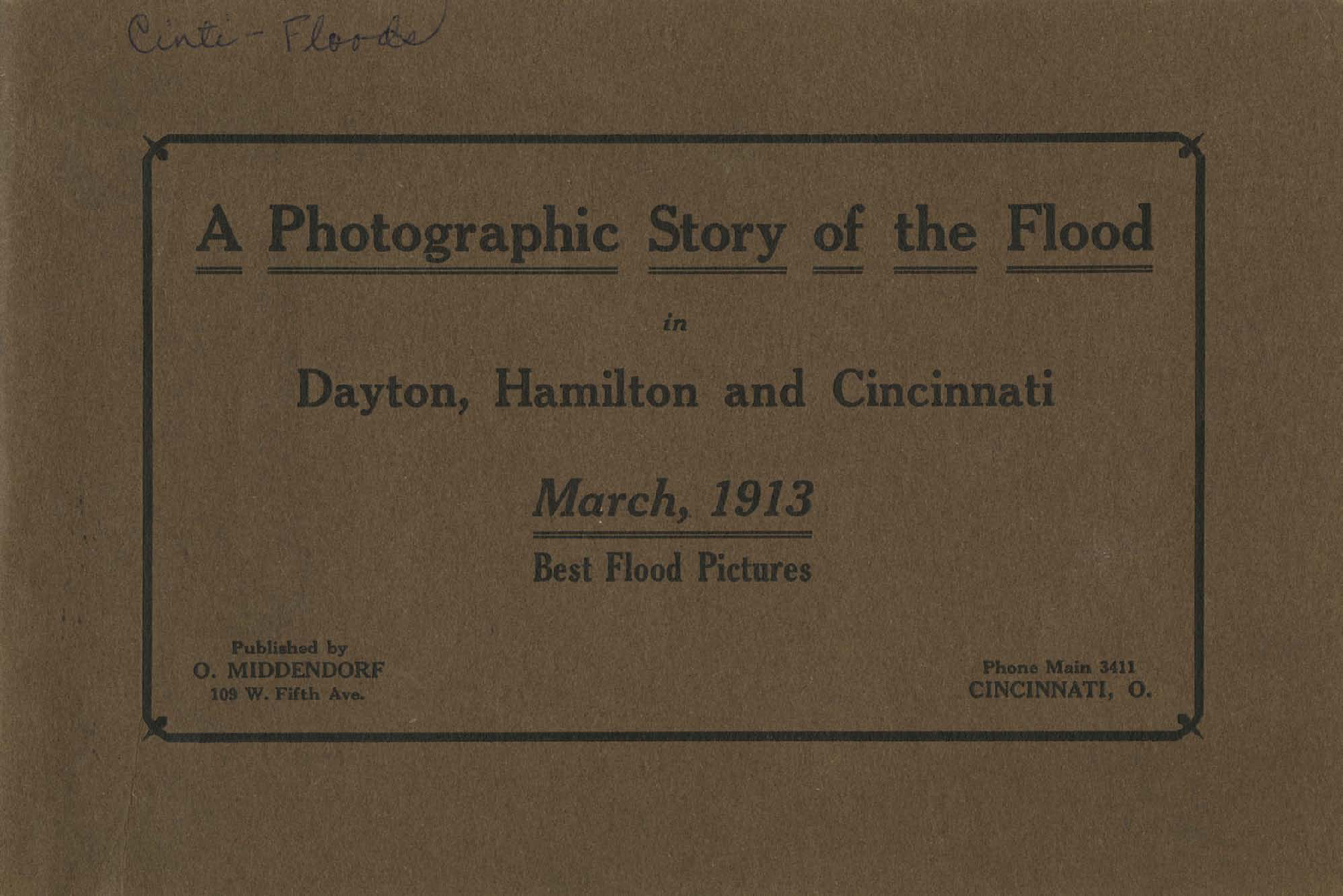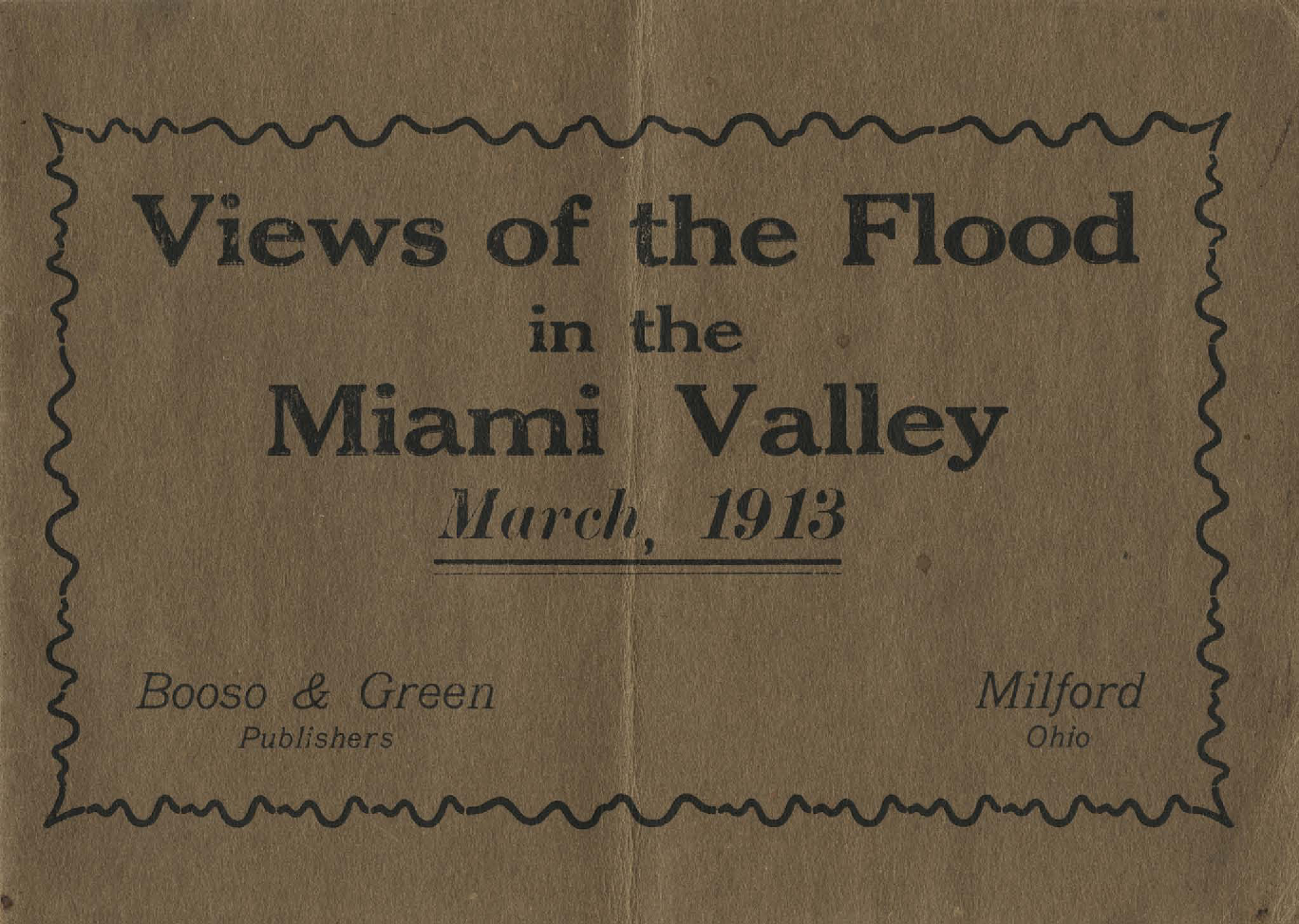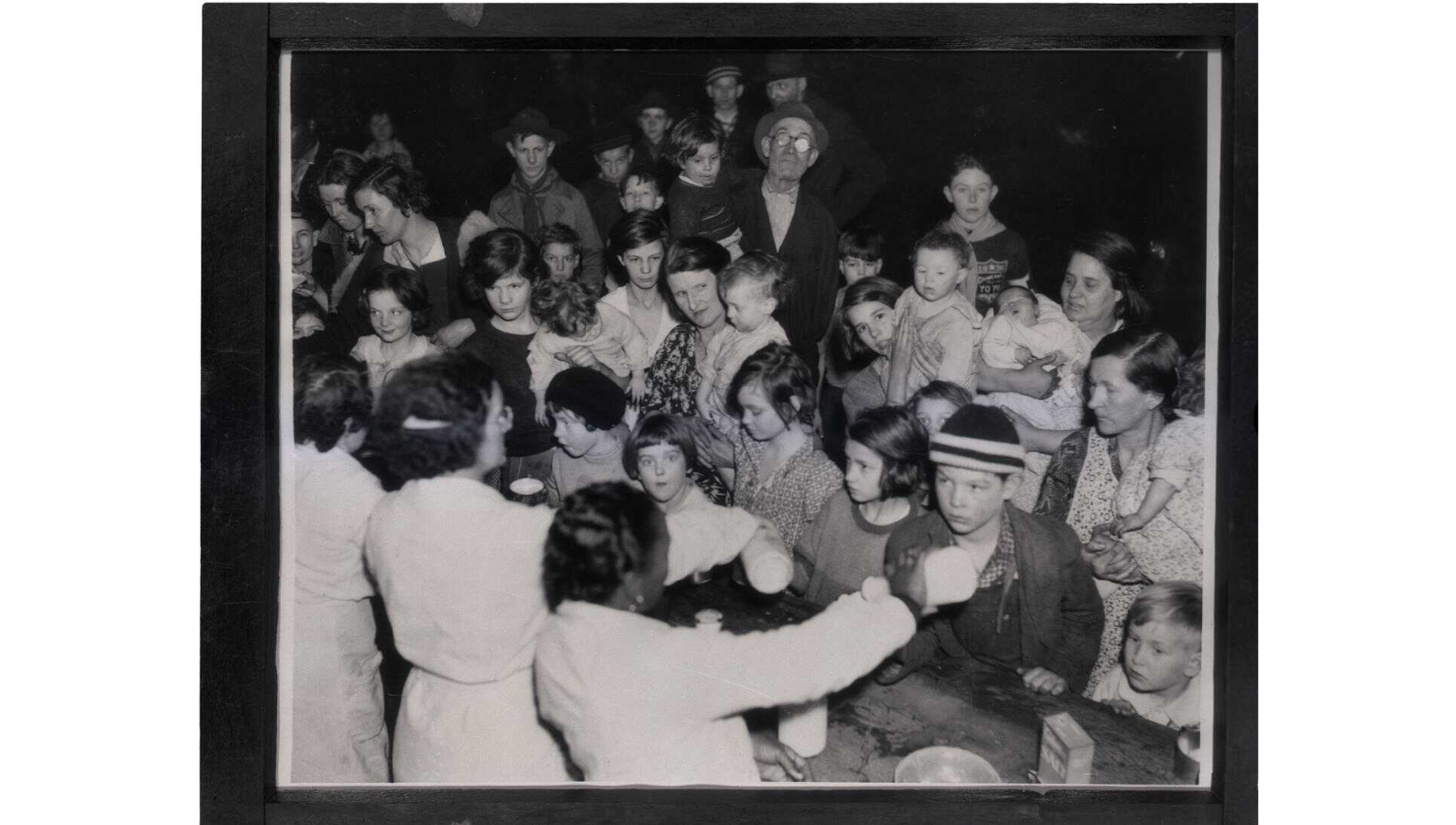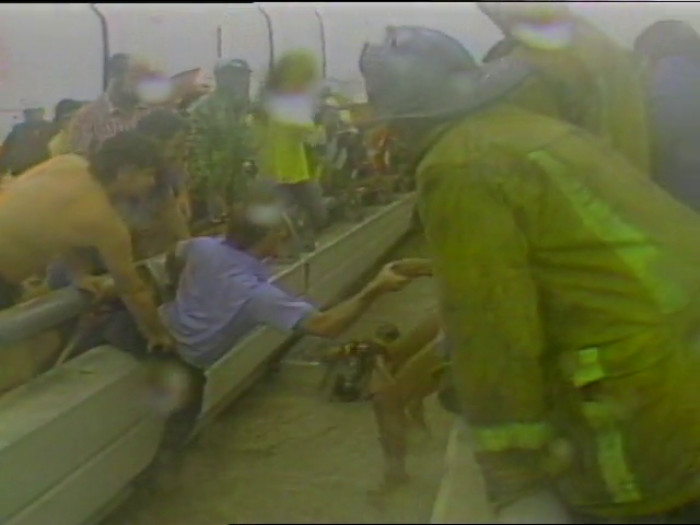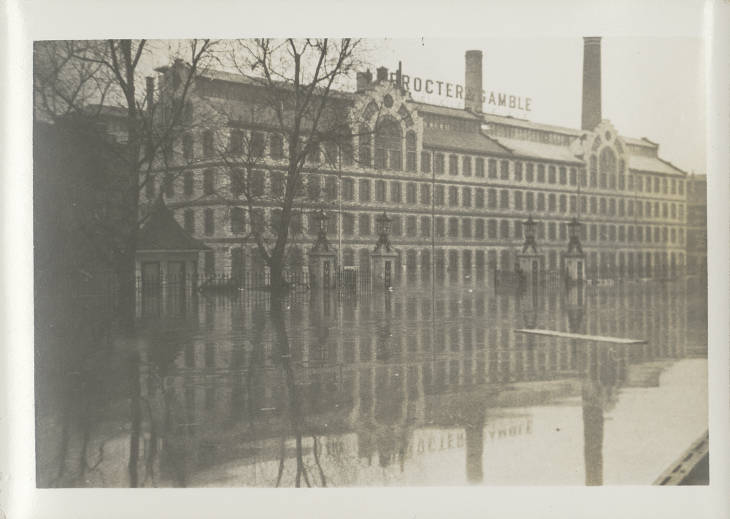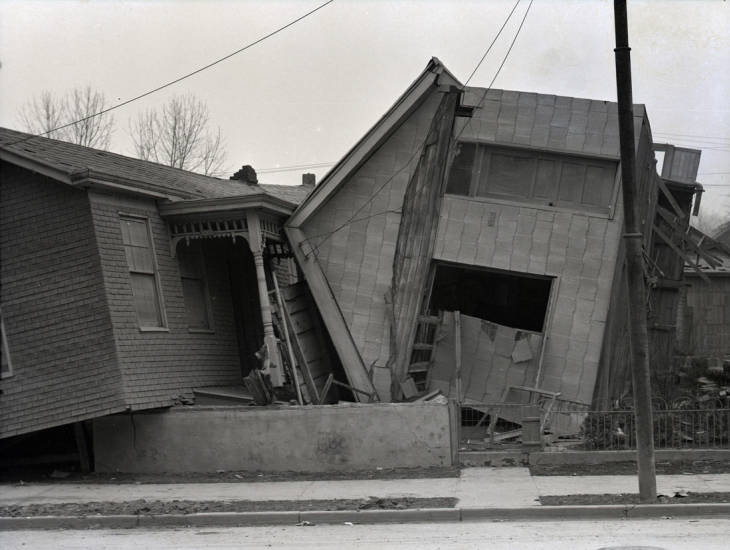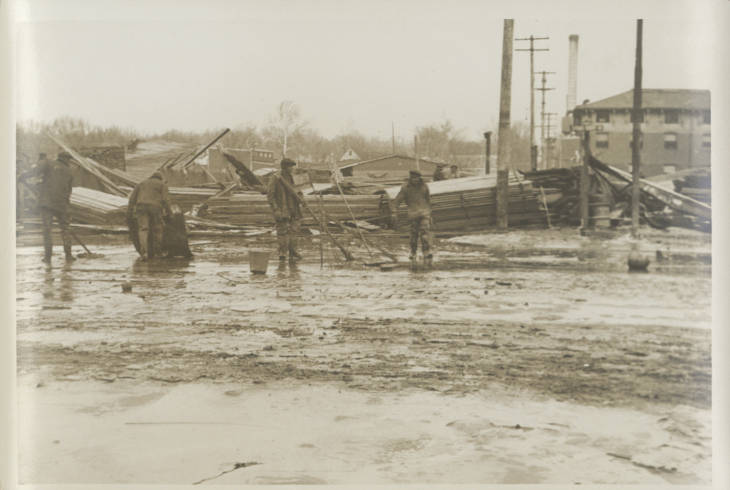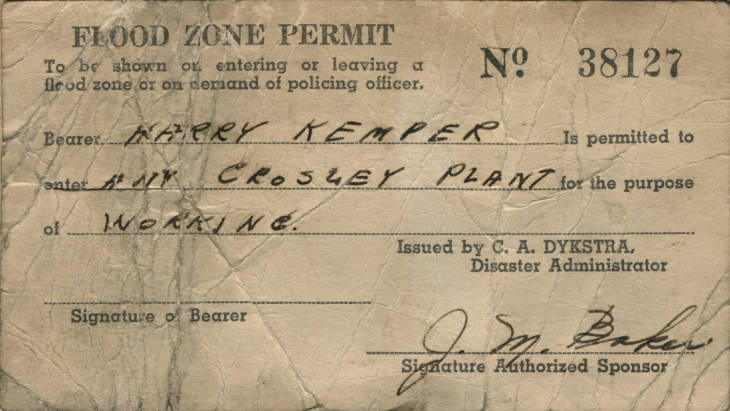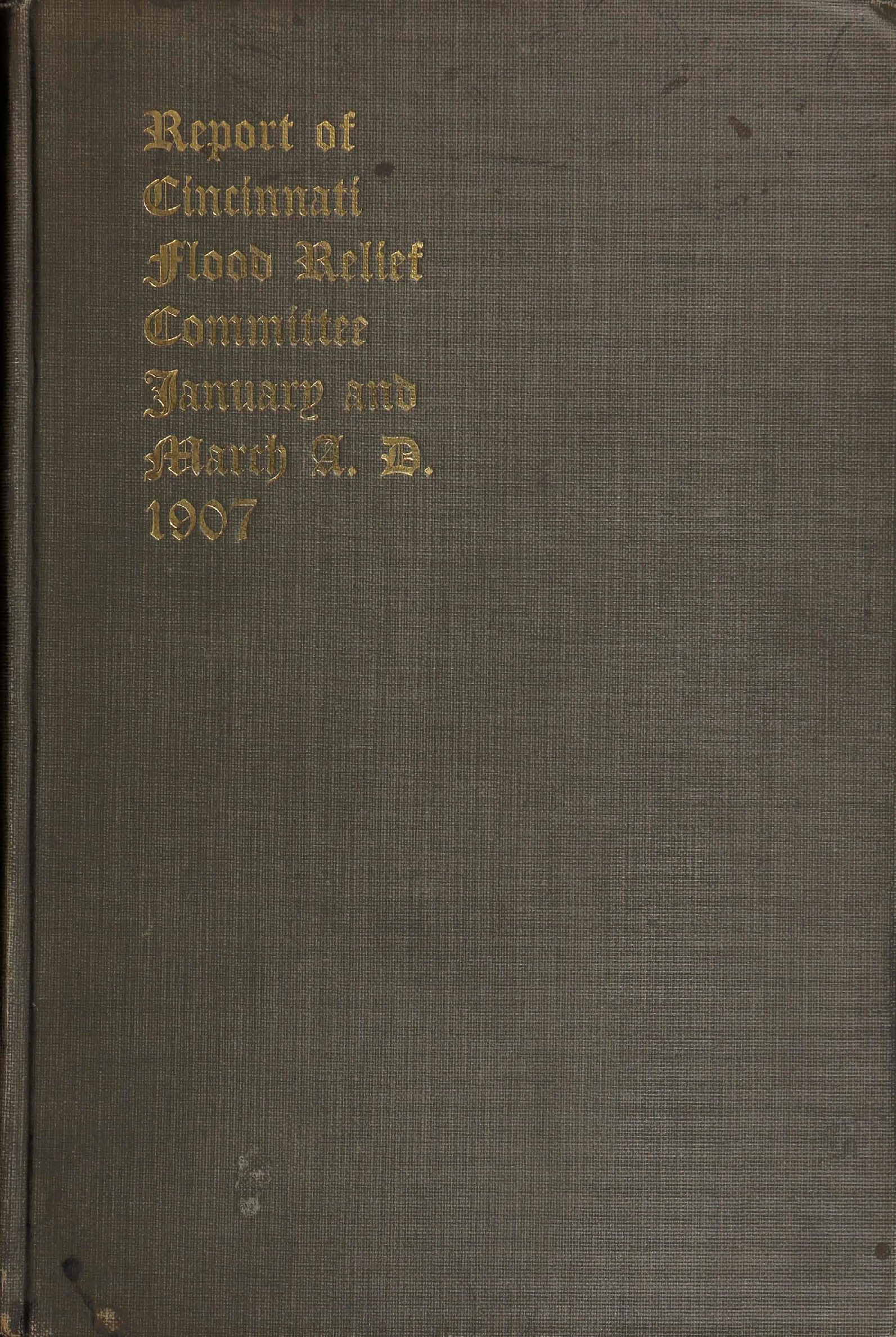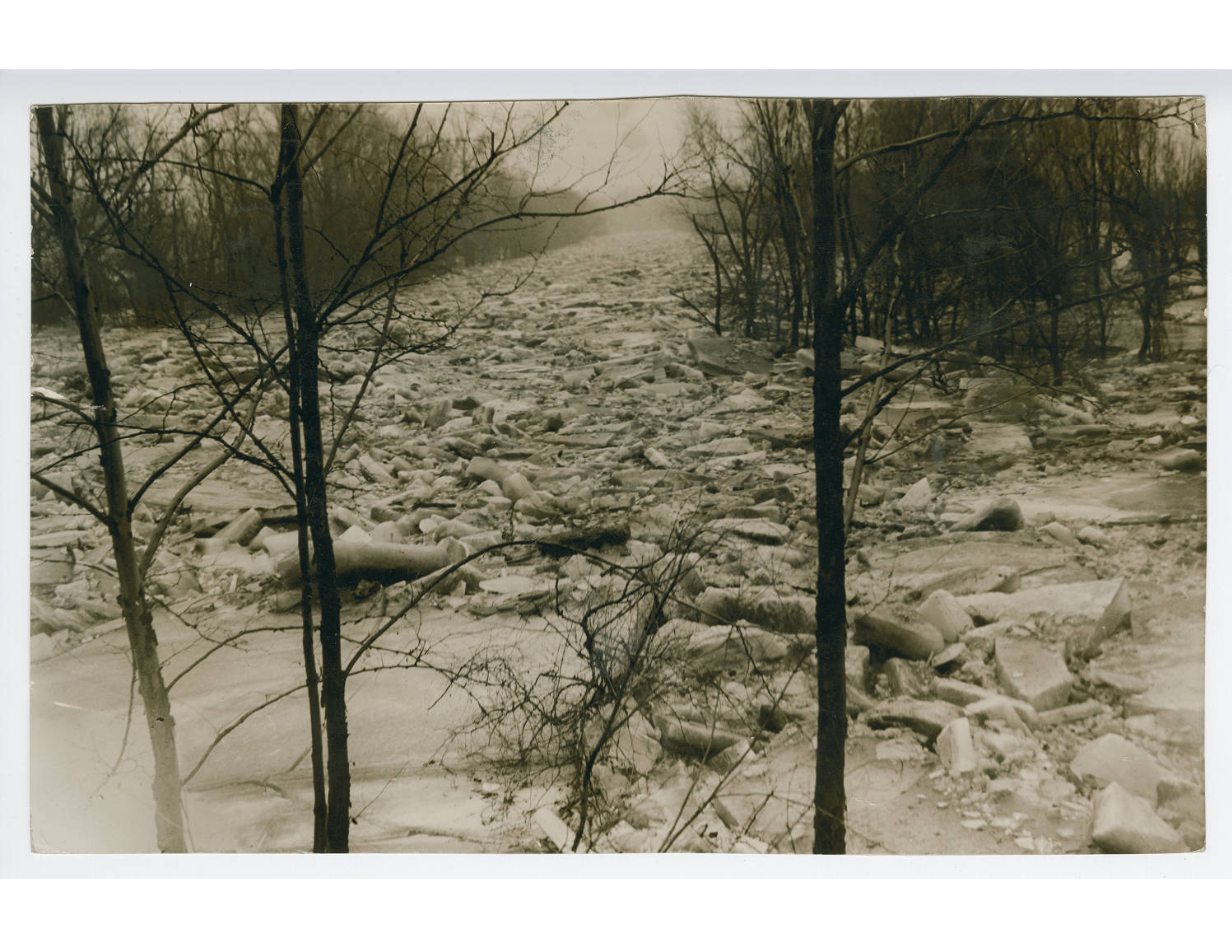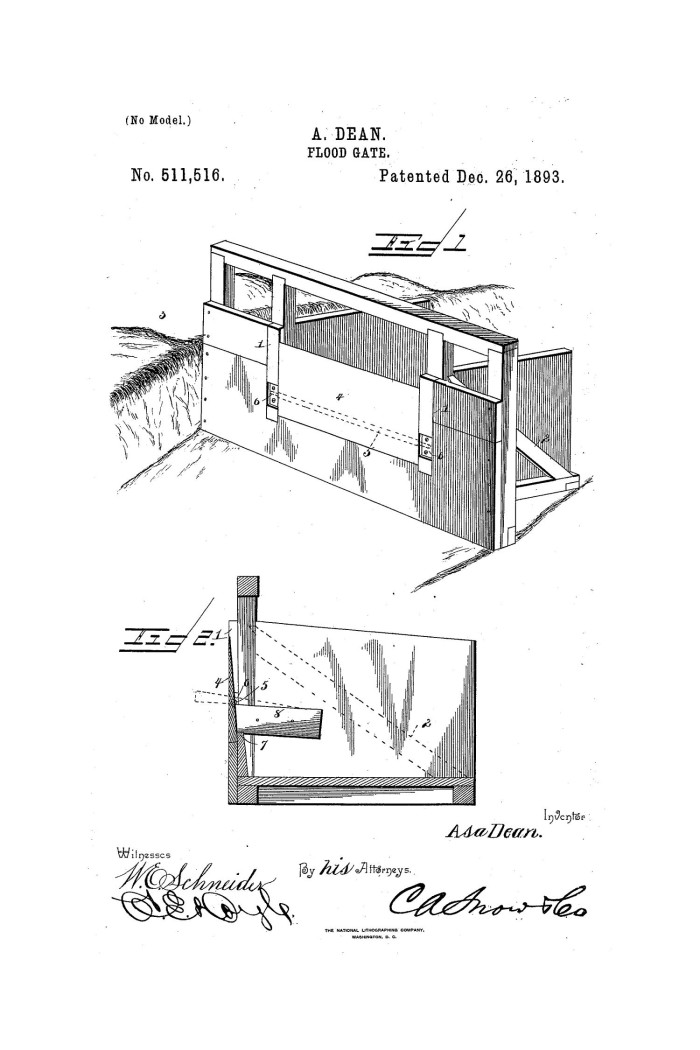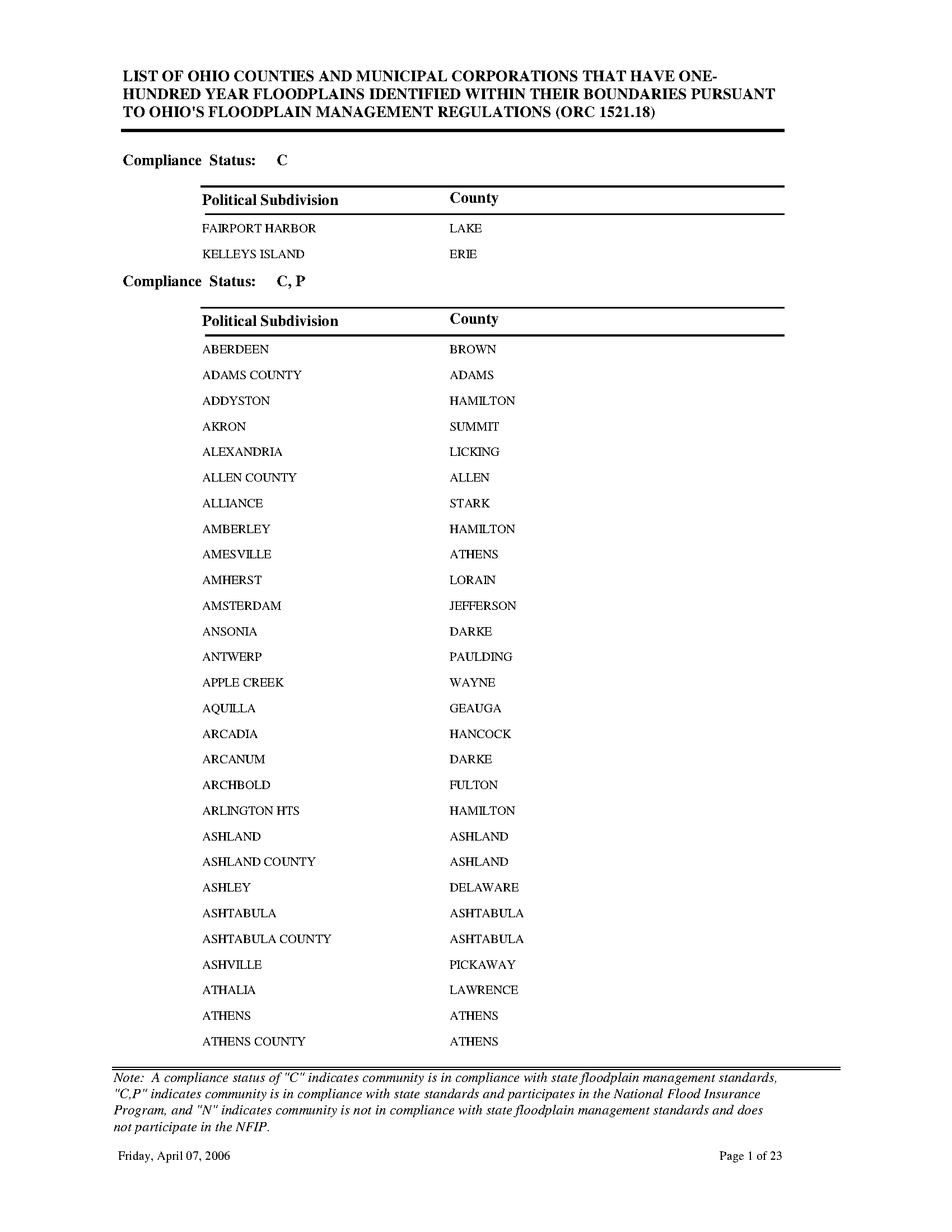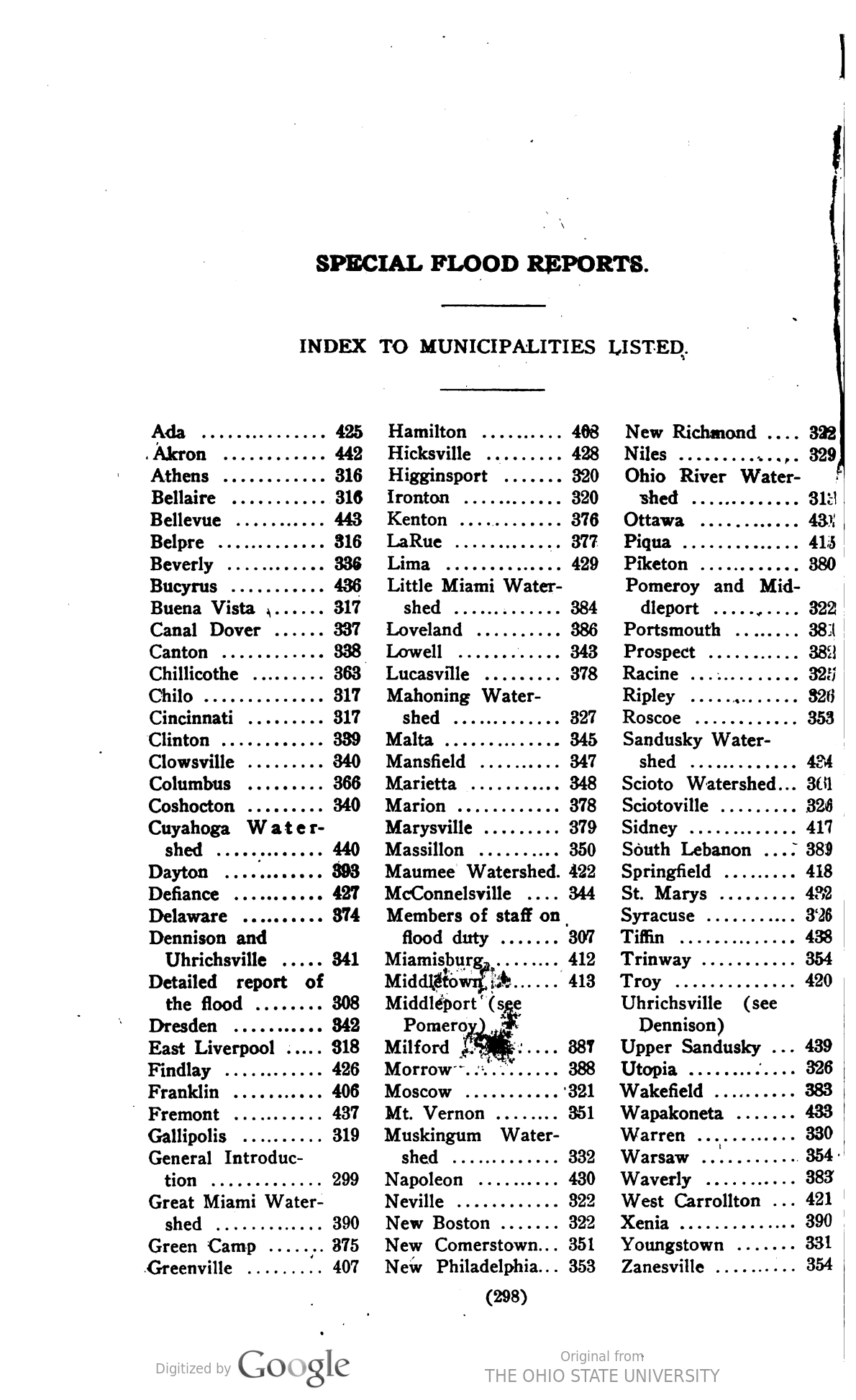Flooding in Ohio: Using Historical Floods to Prepare for the Future
Module Overview
- Topic: Flooding in Ohio: Using Historical Floods to Prepare for the Future
- Time Period: 1907-2008
- Keyword(s): Weather/Climate, Hydrologic Cycle, Response to Crisis, Geography
- Grade Level(s): Middle to high school
- Learning Standard(s): (H.S. American Government) TOPIC: PUBLIC POLICY; (H.S. Science) ENV.ES.5; (Grade 7 Science) 7.ESS.2; Grade 3, 4, 5 Social Studies
There have been many major floods throughout history all over the world. Floods can quickly ruin agriculture, cause extensive damage to buildings and, unfortunately, take the lives of people by drowning, or being stranded without medical attention or basic resources for a lengthy period of time. They can also cause long-term effects, such as putting a dent in the local economy or causing financial strains on families as they try to recover.
One of the most disastrous floods to hit Ohio was in March 1913. Several days of torrential rainfall caused rivers throughout the state to swell and swept away almost everything in the waters’ paths. The level of the water rose extremely quickly and residents had to scramble to dry land and safe havens. Over 400 people throughout the state died as a direct result of the flood and thousands more were left homeless.
Over 100 years later, modern technology has helped diminish the effects of flooding and other natural disasters, but careful planning is a key component to alleviating potential suffering from the weather’s wrath. Structures have been designed to withstand major flooding. Community leaders and organizations have built strong working relationships so that when disaster strikes they can collaborate on keeping their residents safe from harm. Weather tracking devices have become much more advanced. However, there’s always room for improvement.
This primary source set is divided into three sections: Disaster Damage, Immediate Response, and Long-term Aftermath/Future Damage Reduction Efforts. The set is meant to provide an overview of natural disasters, but emphasizes flooding. While it’s primarily devoted to the 1913 flood, other notable floods are also included.
- Disaster Damage
- Various photographs of damage and after effect of the 1937 Flood in Cincinnati
- Immediate Response
- Long-term Aftermath/Future Damage Reduction Efforts
After the primary source items, you will find an Additional Resources list and a Teaching Guide that includes discussion questions and classroom activities.
Flooding In Ohio Set Sections And Materials
Disaster Damage
A photographic story of the flood in Dayton, Hamilton, and Cincinnati, March, 1913 : Best flood pictures
Contributed by the Public Library of Cincinnati and Hamilton County
Views of the flood in the Miami Valley : March, 1913
Contributed by the Public Library of Cincinnati and Hamilton County
Destruction from an Ohio River flood Flood refugees
Video footage of news clips related to floods from the KXAS-TV/NBC station in Fort Worth, Texas
Various Photographs Of Damage And After Effects Of The 1937 Flood In Cincinnati
Procter and Gamble under water at Ivorydale, Cincinnati, Ohio
Contributed by the Public Library of Cincinnati and Hamilton County
Houses swept by floods
Contributed by the Public Library of Cincinnati and Hamilton County
Street repairs after flooding, Cincinnati, Ohio
Contributed by the Public Library of Cincinnati and Hamilton County
Two men in a boat and factories, Cincinnati, Ohio
Contributed by the Public Library of Cincinnati and Hamilton County
Immediate Response
Cincinnati Flood of 1937 flood zone permit
Contributed by the Public Library of Cincinnati and Hamilton County
Report of Cincinnati Flood relief committee, January and March, A.D. 1907
Contributed by the Public Library of Cincinnati and Hamilton County
Ice jam above Lockington Dam
Flood Gate Patent
Contributed by UNT Libraries Government Documents Department
Winfield, MO, June 19, 2008
Long-term Aftermath/Future Damage Reduction Efforts
Substantial damage determinations: a guide for local officials. (2006)
List of Ohio counties and municipal corporations that have one-hundred year floodplains identified within their boundaries pursuant to Ohio's floodplain management regulations (ORC 1521.18)
Special report on the flood of March, 1913 / by E.F. McCampbell
Additional Resources
- The Superstorm That Flooded America – History Channel – Article from 2013 about the 1913 Flood. Provides a general overview of the flood and its impact.
- Ohio Division of Water Resources – Website for the State of Ohio Department of Natural Resources. This department is tasked with “formulating and putting into execution a long-term comprehensive plan for the development and wise use of the natural resources of the state.”
- Ohio Revised Code, Chapter 1521: Division of Water Resources – Section of the Ohio Revised Code, or the Ohio law, that’s the foundation of the Ohio Division of Water Resources. It describes in legalize how the Division will be established, all of it component parts, and its various responsibilities. The statute is used to operate the department.
- Federal Emergency Management Agency (FEMA) – Website for the Federal Emergency Management Agency. This agency is tasked with “Helping people before, during, and after disasters.”
- Miami Conservancy District – Website for the Miami Conservancy District. This organization was set up after the 1913 Flood and was tasked with preventing future floods. They’re currently tasked with “Protecting lives, property and economic vitality within the Great Miami River Watershed through an integrated and balanced system that provides unfailing flood protection, preserves water resources, and promotes enjoyment of our waterways.”
- United States Geological Survey, The Ohio Valley Flood of March-April 1913 , Department of the Interior (PDF) – A report originally published in 1913 by the U.S. Department of the Interior. Provides a detailed and thorough examination of the 1913 flood.
- Original 1913 Flood Footage, YouTube, University of Dayton – Original 1913 flood footage from the Glenn R. Walters collection housed in University of Dayton Archives and Special Collections. Length: 5:26.
- Ohio Floodplain Management Criteria, Ohio Division of Soil & Water Resources, Floodplain Management Program (PDF) – A document explaining current floodplain management approaches and how they can be improved. Also covers the regulations regarding floodplains.
- Ohio Rural Water Association (ORWA) – Website for the Ohio Rural Water Association. According to the website, the members of this organization provide water services to over 2 million Ohioans. These members receive onsite technical assistance, compliance training, and other support from ORWA.
- National Flood Insurance Reform Act of 1994 United States Congress – Amendments were made to the Flood Disaster Protection Act of 1973 and the National Flood Insurance Act of 1968.
- Video news clip about Red Cross volunteers. At the time of the NBC news clip taken in 1997, a married couple had been volunteering for Red Cross with disaster relief efforts for five years. They explain their reasons for wanting to help disaster victims. Length: 1:59.
- Ottawa, Ohio: A Mitigation Success Story. The village of Ottawa, Ohio in Putnam County used various FEMA Hazard Mitigation Assistance grants to eliminate flood risks to property owners. The website explains how this process was completed and points on ongoing improvements still needed.
- Ohio Emergency Management Agency (OEMA) – Website of the Ohio Emergency Management Agency. OEMA provides disaster recovery services, public safety programs, including assistance on how to build a local disaster plan, and more.
Teaching Guide
This guide will serve to outline some possible ways to interact with the digital content and has suggestions to have students pull information from the examples listed above.
Discussion Questions
- What are some ways floods significantly impact a community?
- What are some protocols that should be followed in the immediate aftermath of a flood to minimize damage?
- Do you feel Ohio towns and cities are adequately prepared for a flood? Why or why not? If you believe they aren’t, what are some ways they can become better prepared?
- What are some other kinds of natural disasters besides flooding?
- What are some recent natural disasters that occurred in the United States or around the World? What kind of natural disaster were they?
- How does the damage from a flood compare to that of a hurricane?
Download Discussion Questions (PDF)
Classroom Activities
- Make a timeline of improvements over the years of disaster relief efforts from the 1913 flood to the most recent major flood.
- In small groups, appoint a mayor and other important city or county officials. Your small city of 30,000 citizens is forecasted to receive a major storm that could cause potential flooding and flash floods in three days. What preparations do you mandate for your city to protect the citizens before the storm hits?
